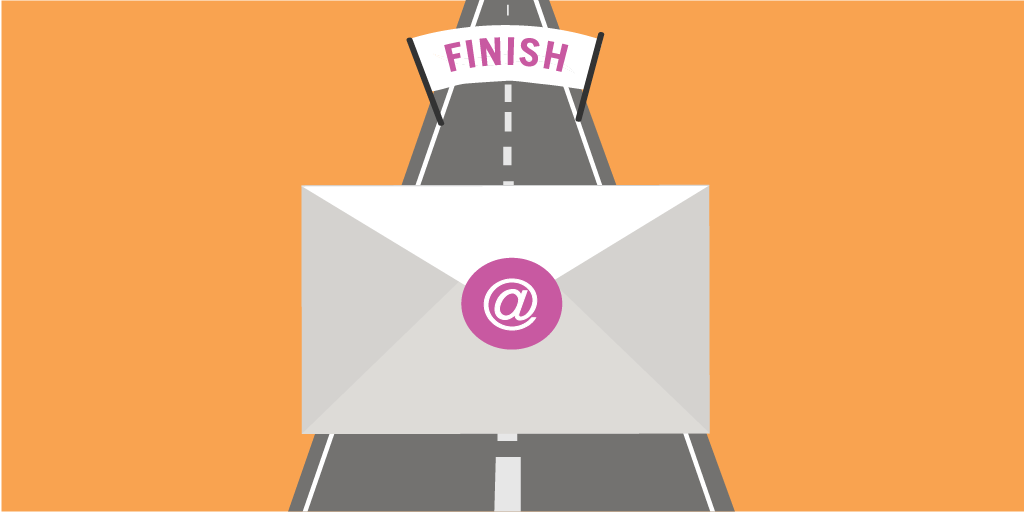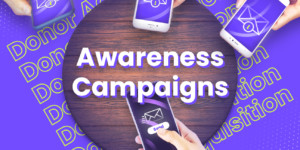With Thanksgiving and #GivingTuesday behind us, the end of the calendar year feels closer than ever. Though most end of year giving campaigns are underway (and have been for some time), there will always be a few stragglers that haven’t donated just yet. This time of year people are bombarded with messages from every angle calling them to some kind of action: donate now, buy today, redeem this one-time offer. It’s hard to cut through all of that noise, especially when your audience is also dealing with holiday happenings or sifting through shipping and order confirmations in their inboxes. Here we’ve outlined a few easy ways to make the most of your appeal emails that will help to boost end-action rates by allowing you to stand out.
Simplify the giving process by making your call to action clear and simple; and in this case, there should only be one: DONATE. Your call to action button should be large, but not imposing, and colorful. Those who click should be brought directly to a donate page and not to a home page where they’ll have to search around for a donate link or button. Every second spent trying to make a donation brings your potential donors closer to dropping off. However, it’s important that anyone receiving your emails and those visiting your website have the same clear pathways while you’re actively soliciting for donations. Simplify the home page of your website to the best of your ability so that you have only one call to action: donate.
Need quick tips for the donation page? Find a way to tell your story somewhere, either with pictures or testimonials. Be generous with your thanks. Encourage recurring gifts (this helps keep you top of mind) and make sharing your cause and donate page EASY, which leads us to our next point…
The most appropriate time to ask donors to share your page or message with their friends and family is right after they make a donation. Once they land on your thank you page, be sure the next call to action they see is to share. The name of the game is still the same: bold and simple. Embed quick and easy click to tweet or post to Facebook buttons that use a pre-written message that includes the proper links. These same share buttons or links should be included in your initial email and in any auto-response thank you emails that donors receive.
Encourage donor solidarity by providing fun badges or images that boast their participation and further your message that donors can use as their profile picture or in a post. This strategy gives your campaign some extra legs and also prevents you from leaving money on the table. It’s also fun and helps to create meaningful engagement between you and your supporters.
The objective with any solicitation email is to get your message across quickly while standing out from the crowd. By this point in your campaign, it’s likely that the remaining group of people receiving your emails (those have haven’t given) have a sense of what you’re all about. The problem is that something just isn’t getting through. A quick remedy for this problem is to really strip down your copy and simplify the message. Try sharing a meaningful statistic in your message headline that puts the potential donor at the center of the impact or use that opportunity to educate your readers. For example:
Because of you, 10 families can eat tonight.
With your help we can put winter coats on 500 children.
Your donation puts these cats and dogs in their forever homes.
Shortening your copy enables recipients to distill the message a lot easier, improving its chance to make a real impact that pushes them to give. In lieu of words, continue to engage emotionally with pictures that allow you to tell your story at a glance. Illustrate your story by showing work in action, the children you’re helping, or the animals you’re getting off the cold streets. Whatever forges a deep connection with your readers gets you closer to the gift. It’s important to engage emotionally before making the ask, so be sure to foster that feeling before they see the call to donate.
Here are a few great examples:

Second Harvest Food Bank
Operation Warm Esther Honey Foundation
Esther Honey Foundation
The most important thing to remember when soliciting for donations is that you’re building a relationship that will ideally last a lifetime. Beyond what to say and how often to say it, what matters is that you’re meaningful and compelling. Continue telling your story through every step, and be personal. It’s the little things that matter and make you stand out, like making sure donors don’t receive the same letter as non-donors. But for now, focus on creating top notch emails that will take you through the rest of the year.
Like what you see? Stay in touch!



 You Might Also Enjoy:
+ Understanding a Campaign Flow
+ Out of the Box Ways to Thank Donors
+ 1:1 Marketing Tactics for Email
You Might Also Enjoy:
+ Understanding a Campaign Flow
+ Out of the Box Ways to Thank Donors
+ 1:1 Marketing Tactics for Email






